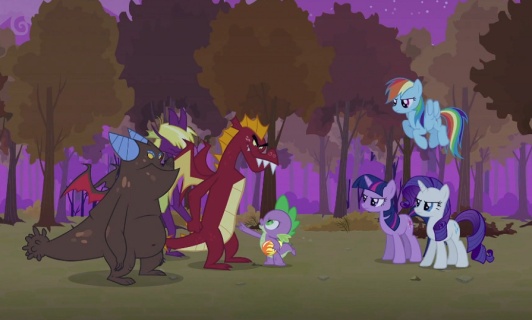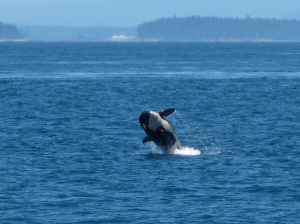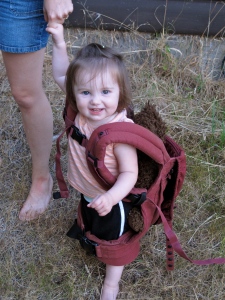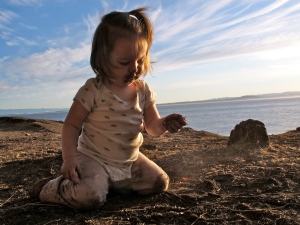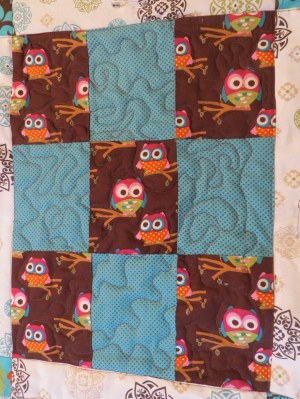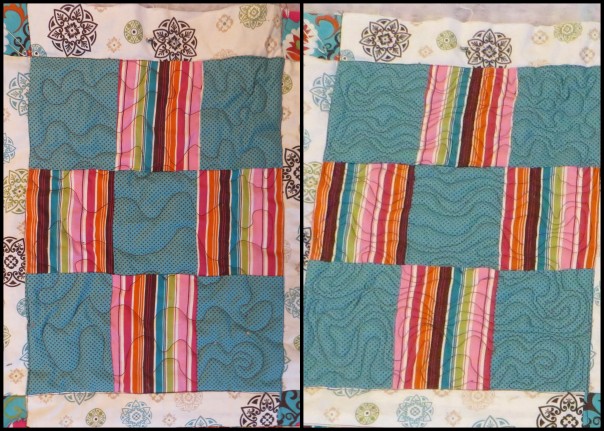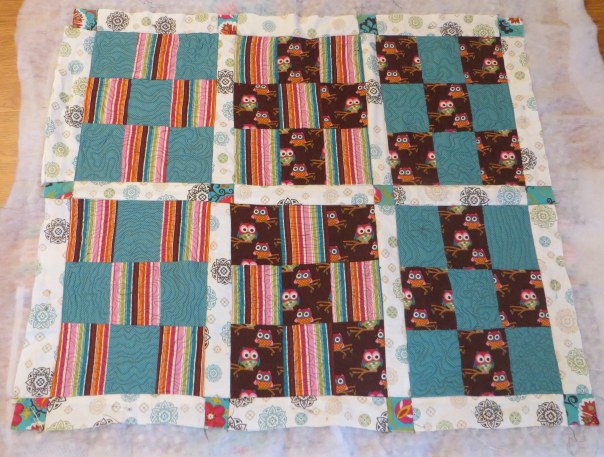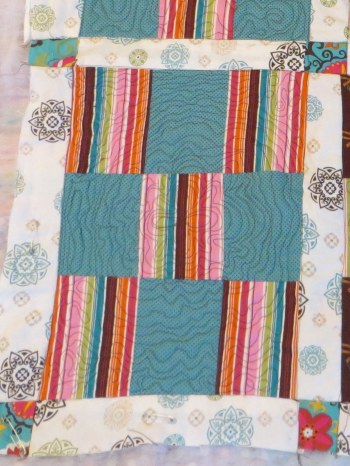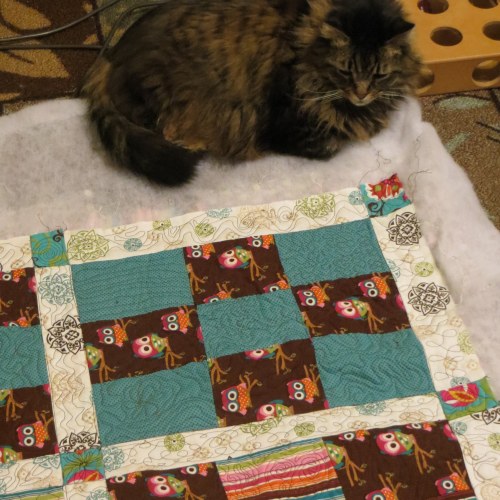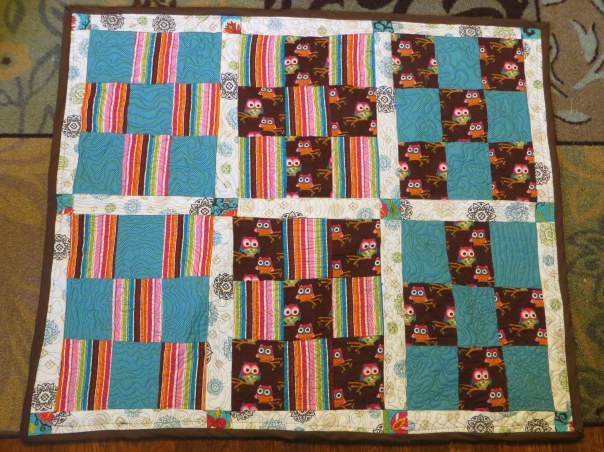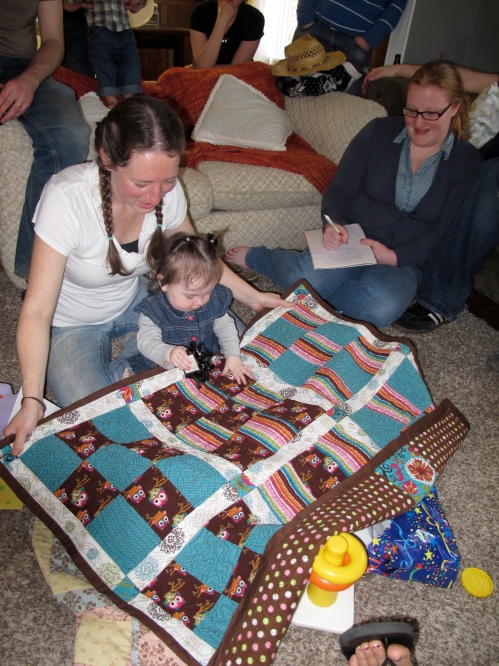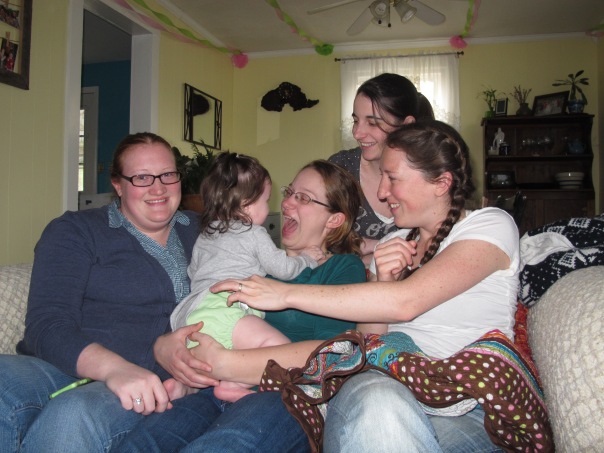Monthly Archives: September 2014
What My Little Pony Has Taught Me About Gender Identity & Expression
I’m about four years late for the party, but I recently got in touch with my inner five-year-old girl and watched every single episode of My Little Pony: Friendship is Magic.

Four years ago, when this cartoon first aired, a few critics and parents, along with a large subpopulation of the internet–unexpectedly, most of them adolescent to adult males–sat up and took notice. Here was something new and different in children’s television. This wasn’t just a pink saccharine girls’ show. This was a (yes, often pink and always saccharine) show about how there are, in the words of the creator, “lots of different ways to be a girl.” For the most part (with only a very few flubs), it’s been hugely successful at that mission, depicting unique female characters with different strengths, weaknesses, likes, dislikes, conflicts, and solutions.
But, strangely enough, My Little Pony: Friendship Is Magic can also say quite a bit about what it means to be a boy. Most of the time this message comes not directly from the show itself, but through the show’s male fans. In March, a 9-year-old boy, Grayson Bruce, made national headlines when, after being bullied for his My Little Pony backpack, the school addressed the issue by telling him to leave the backpack at home. (After the incredible outcry about this victim-blaming, the school reversed its position, and took the opportunity to change its approach on bullying–a happy ending!)
There’s not always a happy ending, though. I first learned of Michael Morones, an 11-year-old fan of My Little Pony who attempted suicide in January, from Epbot.com, a blog I read religiously. At the bottom of the blog post on Epbot, there’s a compilation picture of kids who are “Epbot Exemplars,” or “geeks who know what they love and show it with pride.” As you can see, these are often girls who like “boy things.” That’s something our culture has become much more accepting of (even if we still have a long way to go). But boys who like “girl things”? Or children who reject the gender binary altogether? Now that’s a pony of a different color!
But these children are here. They’re speaking up. They’re telling us that they’ve seen the social constructions they’re inheriting from us, and they do not accept them. We need a new vocabulary. These children–and adults–are not necessarily transgender–that term has to do with your gender identity, or a person’s internal sense of their gender (which, by the way, has nothing at all to do with sexual orientation). Rather, we need terms to deal with gender expression–a person’s external projection of masculinity, femininity, everything in between, and/or something else altogether. Another of my favorite blogs, Raising My Rainbow, has taught me several words in this new vocabulary. Gender non-conforming, gender fluid, and gender creative are all terms that apply to people who don’t fit neatly and completely into the boxes of “male” or “female,” “boy” or “girl.”
Enter Seabreeze, a character on My Little Pony: Friendship is Magic who is, I would hazard to guess, the first male character in mainstream children’s television to be openly and unapolagetically fluid when it comes to his gender expression.

Seabreeze appears in the episode “It Ain’t Easy Being Breezies,” and he is not a pony, but a small “adorable fairy creature” called a breezy. I’ve read nothing that indicates the show’s creators intentionally crafted Seabreeze as a gender-fluid character, but I like to think that by the fourth season of the show, they’ve noticed the positive ripples their show has been making, and created Seabreeze as a nod to their gender-fluid fans.
I think this reading is not unlikely, because there have been episodes in earlier seasons which seem to be supportive of their fans who are “boys who like girl things.” In the second season episode “Dragon Quest,” Spike, who is a baby-dragon sidekick to one of the ‘mane’ characters, goes off to try to make friends with other dragons (read: boys), but comes to realize that he’s much happier sticking with his friends who are ponies (read: girls) and the interests he shares with them. He learns that “who I am is not the same as what I am,” ie, he might be a dragon, but he can still have characteristics much more closely associated with ponies than with dragons.
Ultimately, though, “Dragon Quest” doesn’t even begin to break down the gender binary. The dragons still (mostly) stick with dragons, and the ponies still (mostly) stick with ponies, and there isn’t any true fluidity between the two.
When it comes to Seabreeze, despite the pink hair, there are some reasons it might be a bit bold for me to claim he’s gender-fluid. Although, like ponies, the breezies are equestrian creatures (who, you know, also have antenna and wings), we really don’t know very much about them–and perhaps more importantly, there aren’t really any clear traits that signal gender differentiation at all for the breezies. For ponies in the show, females typically have longer eyelashes than males, but all of the breezies seem to have long eyelashes. Male ponies don’t tend to have manes that are long & flowing, or big & poofy, like some females do, but all of the breezies have either long & flowing or big & poofy manes.

We also don’t know anything about Seabreeze’s interests. We don’t know what his hobbies are, or what he does for fun. We don’t know whether he likes what are, traditionally, “girls’ things” or “boys’ things.” We do know that he is, at least for the moment, in somewhat of a leadership position among the breezies. We know he wears a gender-neutral black one-piece outfit, with a bit of white fur-like trim that adds some pizzazz to the outfit. (We do not have any other breezy clothing to compare this to. Ponies tend to wear clothing for special occasions, or to denote their roles in a group–here, the outfit could just be an indication of his leadership status.)
But Seabreeze is the only breezy who is able to talk with the ponies, and the only breezy who gets any character development at all. So the fact is inescapable that here is a character with a blue body and long pink hair, who prefers male pronouns but has long eyelashes, who is voiced by a male actor but with the pitch raised due to his small size. Here is a character who does not fit neatly or completely into any of our gender boxes.
Seabreeze’s character development over the course of the episode doesn’t appear, at first glance, to have anything to do with gender. The breezies are knocked off course during their migration, and Fluttershy, one of the mane characters, takes them into her home to care for them until they can get going again. Seabreeze initially seems overly harsh and, in fact, downright mean: he tries to get the rest of the breezies moving again, but they don’t listen. He yells at them and calls them names–he calls them losers and wimps; he says they’re not too bright and calls them incompetent. Meanwhile, the rest of the breezies take advantage of Fluttershy’s overly-kind nature, and convince her to keep pampering them and to continue letting them stay in her home instead of going back to work, even though there’s a time limit on how long the portal to their own world will stay open, making their delay particularly dangerous.

Fluttershy and breezies
For a character who, I’m arguing, is meant to be a positive portrayal of a gender-fluid individual, Seabreeze sure doesn’t seem very likable at first. To fully understand the undercurrents of gender in this plot, it’s helpful to look back at another episode from the second season, “Putting Your Hoof Down,” which also centers around Fluttershy. Out of all the mane characters, Fluttershy is one that tends to have traditionally feminine characteristics. She represents the virtue of Kindness, and is gentle, soft-spoken, good with animals, and an excellent care-giver. “Putting Your Hoof Down” (an episode which resonates very strongly with me!) explores the downsides to those characteristics when it shows how Fluttershy can sometimes be overshadowed, overlooked, and treated as a doormat as a result of other ponies taking advantage of her timid behavior.

Literally, a doormat.
Several of her friends, who are strong, assertive women, try to teach Fluttershy to stand up for herself, but nothing seems to work for her. At least, not until she enrolls in Iron Will’s Assertiveness Training.

I need to take this class.
Unfortunately, Iron Will (who happens to be a super-macho, hyper-masculine Minotaur) teaches Fluttershy to be aggressive rather than assertive. It’s not the kind of assertiveness that Fluttershy needs in order to stand up for herself, but rather the sort of “assertiveness” that results from an innate sense of male privilege, where you walk over everybody because you haven’t bothered to look down to see them.
When I watched this episode, I was at first rather nervous at the direction the plot was going in. I was worried that in showing that the result of the gentle, feminine Fluttershy taking on the more masculine trait of assertiveness is her turning into a character that is mean, “bossy,” or a “b****,” the episode would only further perpetrate the negative stereotypes associated with assertive females. However, the ending rescues the episode. Fluttershy learns to find a balance between her innate gentleness and her new-found strength, and she stands up to Iron Will himself when he comes to collect the course fee, not by yelling and being aggressive, but by telling him gently (but assertively!), “No means no.”

In this way, Fluttershy affirms that she will no longer tolerate being a doormat–but also that hyper-masculine displays of strength are not appropriate methods for standing up for yourself. Taken by itself, I still think “Putting Your Hoof Down” is somewhat problematic, showing too much of the negative side of assertiveness when it’s taken too far and not enough of the positive ways one can find that balance between gentleness and strength. But in the wider context of the show, with plenty of other episodes (including “It Ain’t Easy Being Breezies”) giving Fluttershy opportunities to use her quiet resolve, for the good of herself and her friends, these issues diminish.
Fluttershy’s character arc in “It Ain’t Easy Being Breezies” is that she must realize that, although she thinks she is helping the breezies, by allowing them to take advantage of her, she’s gone back to being a doormat. Once she realizes just how dangerous it is to let the breezies stay, and that the only way to really help them is to use what she previously learned and tell them (gently but assertively), “No means no,” the plot is resolved, and the breezies are on their way back home.

“But the truth of the matter is that I must be firm! You must go, now!”
Seabreeze, on the other hand, has almost the entirely opposite arc. In the beginning, he’s trying to get the breezies to get going (for their own good) by using Iron Will’s style of aggression. But unlike Iron Will, Seabreeze is not super-macho and hyper-masculine. He’s in fact rather feminine, and Iron Will’s tactics don’t work for him. They backfire.
However, it is only when Fluttershy understands that Seabreeze is trying (unsuccessfully) to be assertive rather than aggressive that she understands what must be done. Seabreeze is making the same mistake she’d made in “Putting Your Hoof Down,” but Fluttershy is able to demonstrate a gentler, more feminine form of assertiveness. Where Seabreeze’s aggressiveness had failed, Fluttershy’s quiet assertiveness succeeds.

The effect that observing Fluttershy’s style of assertiveness has on Seabreeze is immediate and dramatic. His demeanor changes to be more like Fluttershy’s–he’s helpful and gentle. And it seems so much more natural for him to be that way.

“You can do this! I am sorry for how I treated you before! It was not right that I called you names! I did not even really believe those things I said! I was worried we would never get back to our home, and I lashed out… I know you can do this! I believe in you! Hold on to me, let us join the group!”
By the end of the episode, both Fluttershy and Seabreeze have found a balance between their feminine gentleness and their masculine strength. And they are both better for it, and are now finally able to work together to help their friends get home.
And then–oh, then!–we see Seabreeze return home. And greet his wife and newborn child.

And in a heartbeat, Seabreeze is not only made into a much more complex character–who wouldn’t get mean if you might be indefinitely separated from your loved ones?!–but a further message is communicated to the viewer, that gender expression has nothing at all to do with sexuality, and gender expression has nothing at all to do with an individual’s ability to be a part of a loving, whole, family. This male who has many very feminine traits is a loving husband and father who works hard for his family, and is also a successful community leader.

And there’s absolutely no reason why he shouldn’t be.
Traveling with baby
My husband and I brought our one year old daughter for a three week stay in a small cottage at Friday Harbor Marine Lab in the San Juan Islands of Washington state. The lab offers me the opportunity to watch the Southern Resident killer whale population, and it is close enough to Seattle to grant me access to colleagues at the Northwest Fisheries Science Center.
Although traveling is one of the major perks of graduate school in the sciences, Josh and I have discovered that traveling with kids can be difficult. So I’d like to share some tips I’ve learned along the way:
1. Pack light.
This seems to be the opposite recommendation that we have received from most parents, but I just don’t understand how people can stand traveling with so much stuff! We packed one suitcase, and since most airlines allow you to check one baby item for free so we also brought a car seat. We were lucky enough to borrow a pack-n-play and a high chair from the marine lab, but if that wasn’t available we would have managed. Here’s a secret: baby’s can eat and sleep anywhere. We also managed to buy an umbrella stroller for $5 from a thrift store on the island. Otherwise, we packed her clothes, the Ergo baby sling, a little diaper carrier / changing mat, her doll, her teddy bear, and three books (Big Red Barn, The Noon Balloon [both by Margaret Wise Brown] and Hand Hand Fingers Thumb by Dr. Seuss). That’s it.
2. Be creative with toys
Since we packed virtually zero toys (because who has space in their single suitcase for blocks and a plastic tea set?) that meant we needed to get creative with things to play with. Evee’s favorite toy at home is her play kitchen, so I immediately set to work recreating that at our little cottage. I emptied a low bookshelf and filled the first two shelves with all of the non-breakable items available in the kitchen, such as wooden spoons, spatulas, plastic plate and cup, a hand cranked mixer, aluminum pot, etc. This was enough to get Evee started, then as the days wore on and we cooked more meals in the grown-up kitchen, I salvaged cereal boxes, egg cartons and berry bins to add to the play kitchen. Finding play food to fill these containers was as easy as looking right out the back door. Evee and I filled the egg carton with pine cones, collected appropriately sized (read: not swallowable) rocks to fill theberry cartons and cut wheat stalks all the same length for mock-spaghetti. This led to unimaginable fun mixing up and eating exotic dishes with my spunky toddler.
3. Let the kid get dirty
This is kind of a no-brainer. The most entertaining thing for a child to do is dig in the dirt, splash in the mud and generally explore the bounty of diverse plants and bugs that can be found on the ground. Sure, she gets dirty, but that’s what baths (or awkward showers in our case, given what was available) and washing machines are for! Evee collected, hugged and kissed crabs and anemones in the intertidal, followed slug trails over pine needles and made mud pies. Can you think of a better way for a one year old to spend an afternoon?
4. Be flexible!
I realize that all parenting advice for infants and toddlers boils down to the word “routine”, but if you’re traveling I advise you to incorporate a bit of flexibility into your lifestyle. Sure the hotel may not have a crib – have baby sleep in bed with you or do a quick babyproofing and make a nest on the floor. Is there something you want to do or experience but it happens after baby’s bedtime? Don’t miss out! If your child is still nursing, you can probably get him or her to sleep anywhere. Otherwise, sneak in an extra afternoon nap and give your baby a taste of the local night life. Did baby drop her shoes in the lake? Going barefoot (even *gasp* outside) will toughen up those tootsies! No whole milk on the airplane? 2% will be just fine. While it may be your best intention to be prepared for every eventuality, a little flexibility and tolerance may be easier than bending over backwards to make sure this new environment is exactly like being at home for baby.
You don’t have to stop traveling once you’ve started a family. In fact, I’m sure exposure to new experiences and life styles is incredibly enriching and educational to children at any age.
Hayl’s First Quilt, Step 3: Quilting! And the Finished Product!
When I left off (quite some time ago) from my last post, I had a complete quilt top, and a “quilt sandwich” pinned together, all ready for quilting.
Now came the scary part: it was time to actually learn to quilt. I do not actually recommend learning to quilt the way I did, which was by reading every online tutorial on machine quilting I could find and then just jumping in and trying it. When I next attempt a quilting project, I’m planning to take a Quilting 101 class at a local quilt shop, for some hands-on guidance. Or, if you do want to just dive in, you probably don’t want to begin with free-motion quilting like I did.
So. I started by reading online tutorials like this one, which I kept coming back to. (Maybe I should have started with this one instead, which recommends that beginners start with straight-line quilting.) Before starting with free-motion quilting, I did what is referred to as “stitching in the ditch”–sewing straight lines in the seams of all the squares and sashing. You could, alternatively, free-motion or straight-line quilt the entire piece as one, but I thought it would be easiest to start with quilting each square as its own “unit.”
Both straight-line quilting and free-motion quilting require a different presser foot than the one used for “regular” sewing. I have quite a few different presser feet for my Bernina, but I don’t have a walking foot, which is recommended for straight-line quilting. I do have a darning foot, which is what’s needed for free-motion quilting. The other thing I had to do in order to get my sewing machine ready for quilting was to lower the feed dogs, the bits underneath the fabric that “feed” the fabric through from front to back. I checked my machine’s manual, and this was pretty simple. Now I could sew in any direction–backwards, forwards, diagonally, or any which way–and I was ready to free-motion quilt.
I started with the middle squares, and then did the ones on the right and left. At first, the spacing of my quilting followed almost directly from the size of the owls. I would meander around the owls in the brown fabric, and go sort of randomly all over the place in the other fabrics, like so:
This looked okay, but as I went, I found I was fairly inconsistent with the spacing, and I liked the areas where the quilting was more dense. So I started quilting tighter:
I thought that looked pretty great! But, of course, it meant that I had to back over the squares I’d done with much looser spacing, and try to make the whole thing even. Here’s a before-and-after of one square that I went over a second time:
In case I am making this entire process sound too easy, let me try to fix that. This entire process was hard. It took a long time. I constantly wondered whether my lines were squiggly enough, or too squiggly, or if I was crossing over my thread too many times, or if I was going to completely ruin the entire quilt by screwing up the quilting so bad that I would have to rip out all of the stitching, which by nature of sewing fast with the feed dogs down meant that the stitches were so small that ripping them out would probably destroy the fabric altogether. Plus it took a lot more arm muscle to move the quilt around, despite its small size, than I’d expected. (Yep, despite the fact that all of the tutorials mentioned this. I figured that would only be the case for huge quilts–but I hadn’t thought about the endurance required to do this for several hours in a row. And this took several days of several-hour quilting sessions!)
As my husband Steve can tell you, he sometimes heard a steady stream of curses coming from the craft room throughout this process. Now, in hindsight, there were a few things that could have made this entire process take much less time, and cause much fewer headaches. One would be to not do such dense spacing for the quilting. Since I’ve made this, I’ve been in that local quilt shop I mentioned, and looked closely at the quilting stitches on the display quilts. I haven’t seen anything even close to being as tight as I did here. This would have not only cut the time actually sewing down, but I would have stopped fewer times to wind bobbins, etc. However, it would have required a much better idea from the beginning what I wanted the final product to look like, which I obviously didn’t have. Secondly, I could have put more pins around the edge of the quilt. There were actually several times where I started working somewhere near an edge–only to find that the backing had managed to fold under itself, requiring me to rip out a bunch of stitches and start that area over. And as I mentioned, it’s incredibly hard to rip out such small stitches without tearing holes in the fabric. Finally, I could have chosen a fabric that wouldn’t stand out at all, so the stitches are much less visible–but with the contrasting light and dark colors I had, I’m pretty sure that would require using clear thread, which comes with a load of problems of its own.
Despite all these headaches, by the time I’d finished quilting all of the squares, I was really happy with what I’d created.
My favorite square is in the bottom left, and it was the last one I did, so I had a better idea of what I was doing by that point. For that one, I started with a flower shape in the middle, and continued going around it in an outward spiral for the entire square:
At this point, I was unsure of what to do with the sashing and borders. I’m not an expert, but I think there are two main approaches to take when it comes to quilting and borders. One is to skip the “stitch in the ditch” step around the squares, and just do all-over quilting over the entire quilt, squares and borders alike. I think that’s mostly done with clear thread, though, or with a thread that will mostly blend in with all fabrics in the quilt. Secondly, you can quilt the squares and leave the borders unquilted–but I thought this looked funny with the how densely I did the quilting for the squares. So I decided to quilt in the sashes and borders, which I’d read was an option, but I don’t really recall seeing. The brown thread would stand out the most on the white fabric, but I decided it would look even weirder if I used a second color of thread.
The quilting of the borders is probably the part of the quilt I’m the least happy with it. (Though I’m sure it probably bothers no one else.) This is where, ultimately, I think free-motion quilting and I are not going to get along. I think it looks messy. I don’t like my crafts looking messy.
I know I’m my own worst critic, though. And I did have some fun in the borders–I’m not sure if Erin has noticed yet, but because I read a tip about free-motion quilting that said if you don’t know what to do next, to make letter shapes, there are some Easter eggs hidden in there 🙂
Finally, all that was left to do was to trim the excess batting and bottom layer, and sew on the quilt binding:
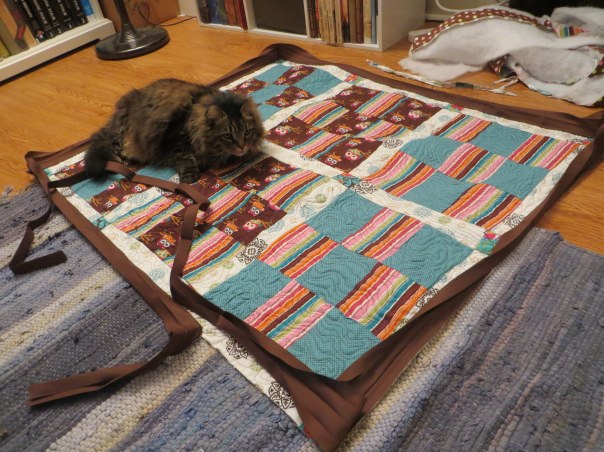 And, at long last, the quilt was FINISHED!!!
And, at long last, the quilt was FINISHED!!!
And it was all TOTALLY WORTH IT when, in April, the birthday girl opened up her present:
Evee with her mom & aunts on her birthday:
